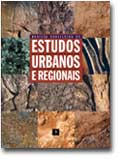Análises espaciais em planejamento urbano: novas tendências
DOI:
https://doi.org/10.22296/2317-1529.2000n3p61Palavras-chave:
Sistemas de Informações Geográficas, Modelos Urbanos, sistemas de suporte ao planejamento, análises espaciais.Resumo
Este trabalho procura explorar as conseqüências, no processo de planejamento urbano, causadas pela convergência de duas ferramentas de análise espacial: Sistemas de Informações Geográficas e Modelos Urbanos. Como será demonstrado, os benefícios dessa convergência são muitos e extrapolam os limites da análise espacial, introduzindo uma tendência de reorganização do processo de planejamento como um todo. Como revisão, é apresentada uma breve visão geral do que são Sistemas de Informações Geográficas e Modelos Urbanos, assim como a identificação de suas principais limitações e das vantagens de uni-los em uma nova ferramenta.
Downloads
Referências
BARRA, Tomas de la. “Integrating micro-economic models with spatial interaction theory”. In Steadman (ed.) Transactions of the Martin Centre for Architectural and Urban Studies, University of Cambridge – 1ª e 3ª partes, 1979.
BATTY, M. “Urban modeling in computer-graphic and geographic information system environments”. Environment and Planning B, vol. 19, p.663-668, 1992.
BERTUGLIA, C.S. & WILSON A.G. Urban Systems. London: Croom Helm – 1º e 2º capítulos, 1987.
BURROUGH, P. A. Principles of Geographical Information Systems for land resources assessment. Oxford: Claredon Press, 1988.
CHADWICK, G. F. “A systems view of planning”. Journal of the Town Planing Institute, May. 1966.
COWEN, D.J., SHIRLEY, W.L. “Integrated planning information systems”. MAGUIRE, D. J.; GOODCHILD, M.F. & RHIND, D.W. Geographical information systems – principles and applications. London: Longmans, 1991.
DOMENCICH, T. McFADDEN, D. Urban travel demand: a behavioral analysis. Amsterdam/Oxford: North Holland Publishing Company, 1975.
ECHENIQUE, M. Modelos matemáticos de la estructura urbana. BsAs, SIAP, 1º capítulo, 1976.
GEERTMAN, S., VAN ECK, J. “GIS and models of accessibility potential: an application in planning”. International Journal of Geographical Information Systems, vol.9, n.1, p.67-80, 1995.
HARRIS, B. “Beyond geographical information systems – computers and the planning professional”. Journal of the American Planning Association, n. 55, vol.1, p.85-90, 1989.
HARRIS, B., BATTY, M. Locational models, geographic information, and planning support systems. Technical Paper 92-1, National Center for Geographic Information and Analysis (NCGIA) – State University of New York at Buffalo, 1992
HEIKKILA, E. GIS is dead; long live GIS!.Journal of the American Planning Association, vol. 64, No 3, p.350-360, 1998.
HILLIER, B., HANSON, J. The social logic of space. Cambridge: Cambridge University Press, 1984.
HUXHOLD, W. E. An introduction to urban Geographic Information Systems. New York: Oxford University Press, 1991.
KRAFTA, R. “Modelling intraurban configurational development”. Environment & Planning B, vol. 21, p.67-82, 1994.
LEE, Colin Models in planning – an introduction to the use of quantitative models in planning. Oxford: Pergamon Pres, 1973.
LEE, D. B. “Requiem for large-scale models”. Journal of the American Institute of Planners, vol.39, 163-17, 1973.
MAGUIRE, D.J. “An overview and definition of GIS”. In MAGUIRE, D. J.; GOODCHILD, M.F . & RHIND, D.W. (ed.) Geographical information systems – principles and applications. London: Longmans, p.9 – 20, 1991.
MAGUIRE, D.J., DANGERMOND, J. “The funcionality of GIS”. In MAGUIRE, D. J.; GOODCHILD, M.F. & RHIND, D.W. (Ed.) Geographical information systems – principles and applications. London: Longmans, p.319 – 335, 1991.
NYERGES, T. L. “Geographic information abstractions: conceptual clarity for geographic modelling”. Environment & Planning A, vol. 23, p. 1483-1499, 1991.
PORTUGALI, J. “Notions concerning the nature of world urbanization”. In: D. Diamond & B.H. Massam (Ed.) Contemporary perspectives on urbanization, Progress in Planning, vol. 46, 1996.
SUI, D. GIS-based urban modelling: practices, problems and prospects. International Journal of Geographical Information Science, vol.12, n.7, p. 651-671, 1998.
WEBER “Uber den standort der industrien”. Tübingen. Versão em inglês com introdução e notas de C. J. Friedrich (1929), Alfred Weber’s theory of the location of industries. University of Chicago Press, 1909.
WEBSTER, C.J. “GIS and the scientific inputs to urban planning”. Part 1: description. Environment and Planning B, vol. 20, p.709-728, 1993.
WEBSTER, C.J. “GIS and the scientific inputs to planning”. Part 2: prediction and prescription. Environment and Planning B, vol. 21, p.145-157, 1994.
WEGENER, M. “Operational urban models – state of the art”. Journal of the American Planning Association, vol.60, n.1, p.17-29, 1994.
WEGENER, M. “GIS and spatial planning”. Environment and Planning B, Anniversary Issue, 1998, p.48-52, 1998.
WILSON, A. G. “A statistical theory of spatial distribution models”. Transportation research, vol.1, p. 253-269, 1967.
WILSON, A. G. “Models in Urban Planning: a synoptic review of recent literature”. In WILSON, A. G. Papers in urban and regional analysis. London: Pion, 1972.
WILSON, A. G. Urban & regional models in geography & planning. London: John Wiley & Sons, 1974.
YEH, A. G. O. & BATTY, M. “Guest editorial – Applications of geographic information systems in urban and regional planning”, Environment & Planning B, vol.17(4), p.369-374, 1990.
Downloads
Publicado
Como Citar
Edição
Seção
Licença
Copyright (c) 2017 Revista Brasileira de Estudos Urbanos e Regionais

Este trabalho está licenciado sob uma licença Creative Commons Attribution 4.0 International License.
Autores/as que publicam nesta revista concordam com os seguintes termos:
1. Autores/as que publicam na RBEUR mantêm os direitos sobre a sua obra e concedem à revista o direito de primeira publicação, realizada sob a Licença Creative Commons Attribution que permite o compartilhamento do trabalho e assevera o reconhecimento da autoria e do veículo de publicação original, a RBEUR.
2. Autores/as têm liberdade para publicação e distribuição não-exclusiva da versão do trabalho publicada nesta revista (ex.: publicar em repositório institucional ou como capítulo de livro), reafirmando a autoria e o reconhecimento do veículo de publicação original, a RBEUR.












.png)
